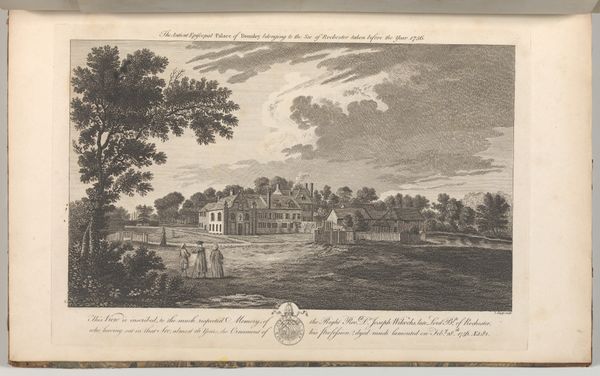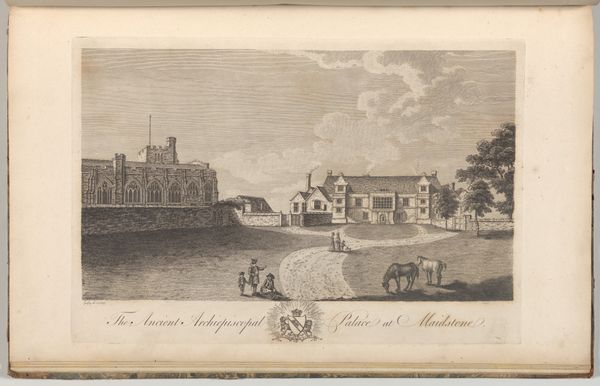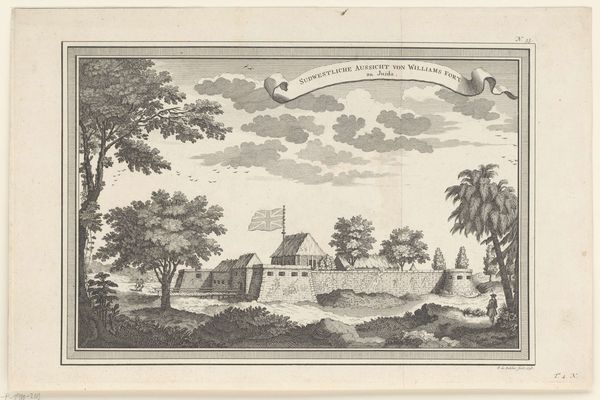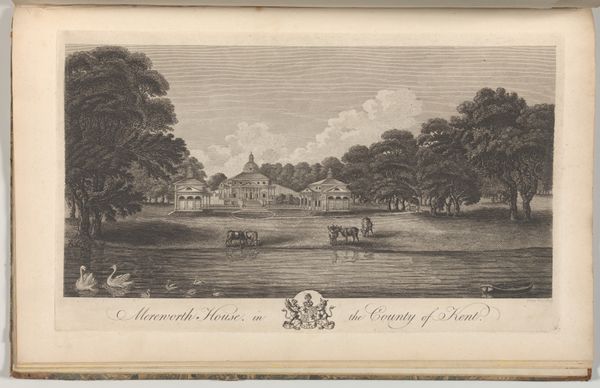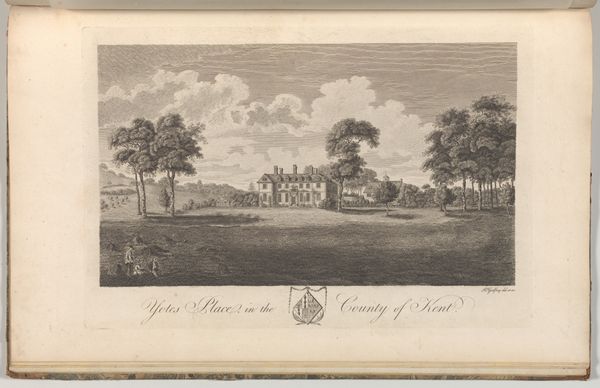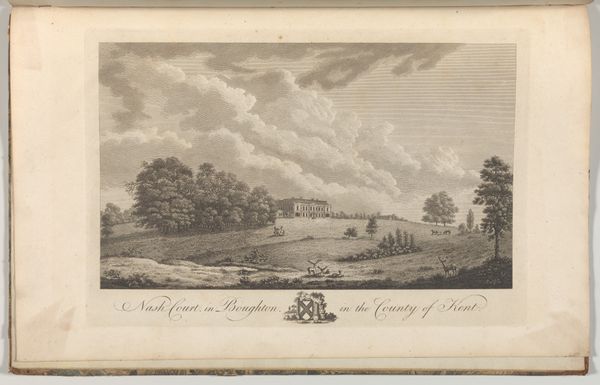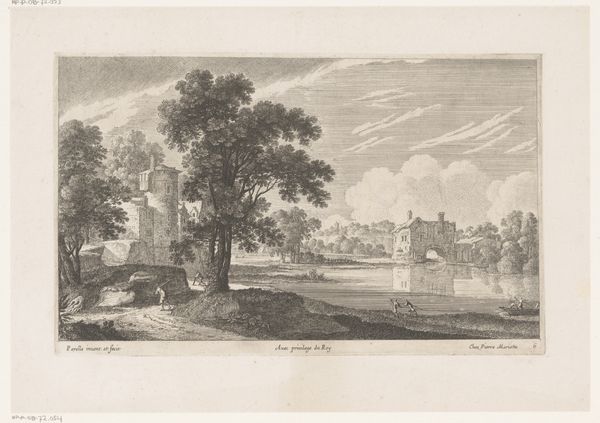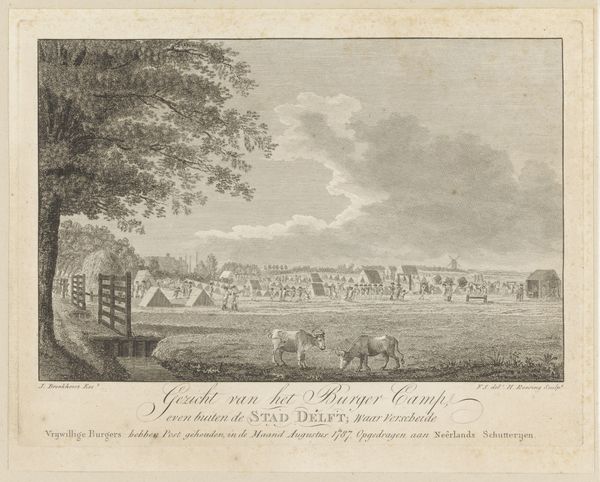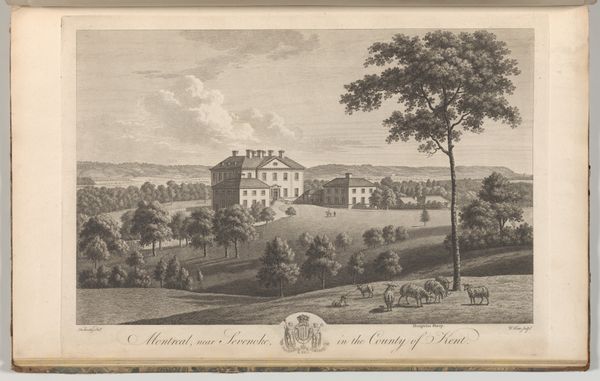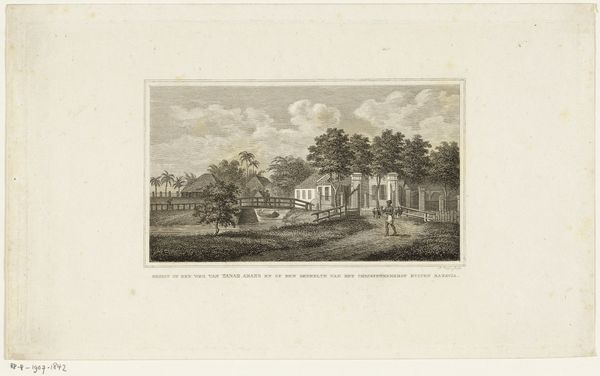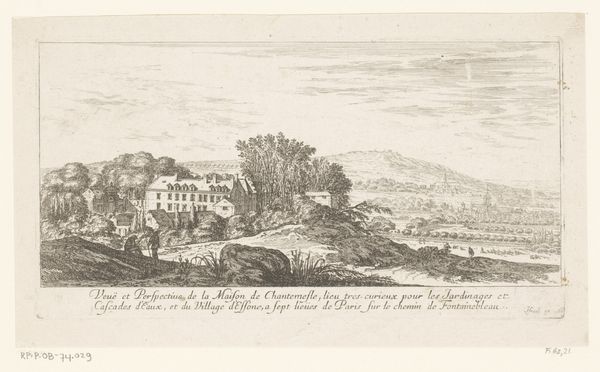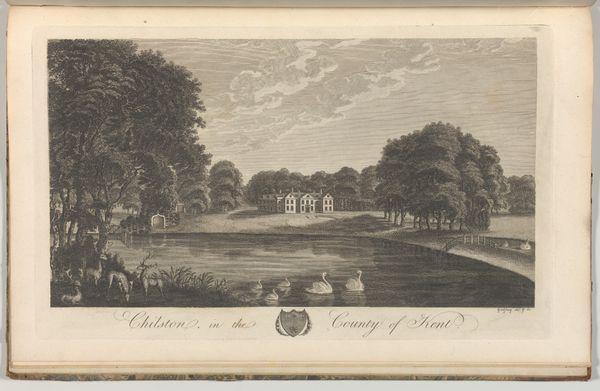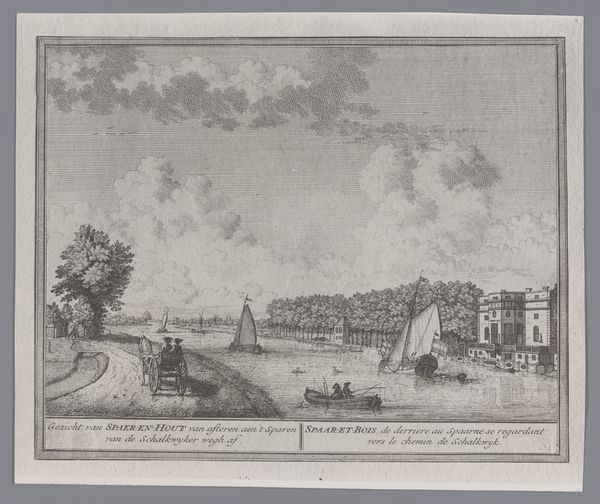
A View of the Ruins of the Archiepiscopal Palace and of the Church of Wrotham in Kent, from Edward Hasted's, The History and Topographical Survey of the County of Kent, vols. 1-3 1777 - 1790
0:00
0:00
drawing, print, engraving
#
drawing
# print
#
landscape
#
perspective
#
cityscape
#
history-painting
#
engraving
#
realism
Dimensions: Book: 17 5/16 × 11 × 13/16 in. (44 × 28 × 2 cm) Sheet: 16 15/16 × 10 5/8 in. (43 × 27 cm) Plate: 10 1/16 × 14 in. (25.5 × 35.5 cm)
Copyright: Public Domain
Editor: Here we have "A View of the Ruins of the Archiepiscopal Palace and of the Church of Wrotham in Kent," an engraving by John Bayly dating from between 1777 and 1790. It's stark, almost ghostly, and creates a scene that feels quite isolated. What grabs your attention when you look at this piece? Curator: It's a lovely study in the romance of ruins, isn’t it? The print manages to evoke a sense of historical weight and decay but there is also something very crisp and almost diagrammatic in its detailing of the ruins. Consider those trees, precisely placed. I wonder about the people who once moved through that landscape. What do you make of their absence, its emptiness, beyond the implication of loss? Editor: I hadn't thought of it that way. The figures would give scale to everything in the image. The lack of figures makes you feel even more keenly that sense of the past having just disappeared. But also maybe an expectation that the space could, conceivably, be inhabited once more. Curator: Exactly. This gets at a kind of yearning, a human constant, a ghost note on what was and, fancifully, still could be. What if someone were to build a structure today that depicted its own ruins? Is there hubris there, do you think? A self-knowing commentary? Editor: Wow, I hadn't considered that... that really flips my perspective! The piece is no longer a window to the past, but maybe a mirror reflecting back at us and our preoccupations. Curator: Precisely! Sometimes, it's through the remnants of what's been left behind, or not built at all, that we actually gain new insights into the human condition in the first place. Editor: Well, that's certainly given me a lot to ponder. I never imagined ruins could be so revealing!
Comments
No comments
Be the first to comment and join the conversation on the ultimate creative platform.
